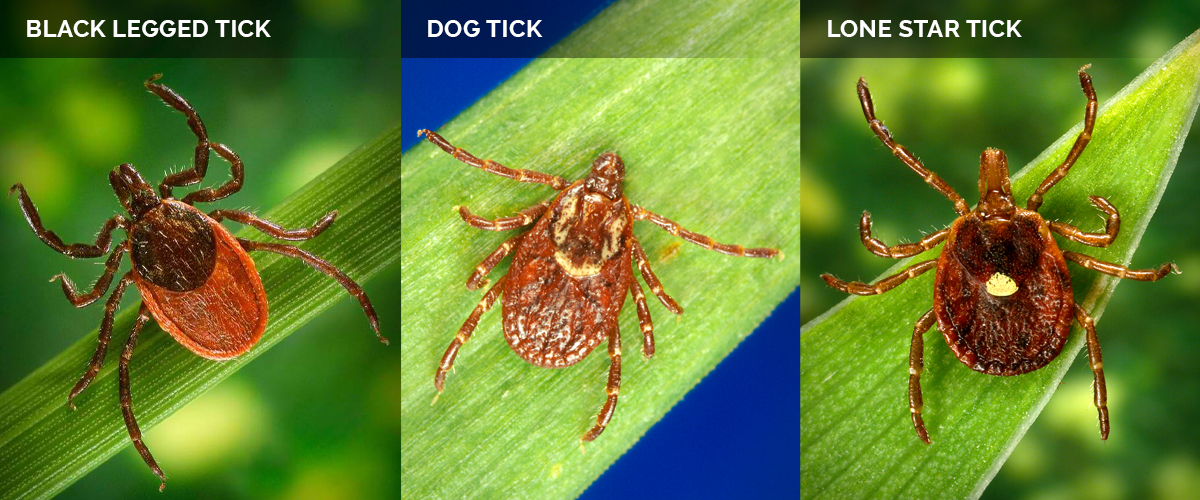The Lone Star Tick: What to Know About the Tick that Causes a Red Meat Allergy
An expert explains how a tick bite can cause a meat allergy and what to watch for if you’ve been bitten by the lone star tick.

Many people associate ticks with Lyme disease, but one particular tick that has become more prevalent in the Northeast — the lone star tick — transmits bacteria that could lead to another condition: a meat allergy.
Previously a southern-state dweller, this species of tick has moved north in recent years thanks to warming temperatures. The lone star tick is unique in that it can transmit a molecule that causes alpha-gal syndrome, a food allergy to red meat. Between 2010 and 2022, according to the Centers for Disease Control and Prevention (CDC), there were more than 110,000 suspected cases of alpha-gal syndrome identified in the United States. However, the CDC estimates 450,000 people might have been affected by the syndrome during that time but never sought medical care.
Health Matters spoke with Dr. Brian Fallon, director of the Lyme and Tick-Borne Disease Research Center at Columbia and a psychiatrist with NewYork-Presbyterian/Columbia University Irving Medical Center, to discover more about the lone star tick, as well as how to detect and treat alpha-gal syndrome.
What ticks are most prevalent in the Northeast?
There are three main species of ticks to be aware of in the New York area. The black-legged tick, also known as the deer tick, and the dog tick are the most common. The lone star tick, which until recently was primarily found in the South and moves three times faster than the black legged tick, is becoming more common and can carry a substance called alpha-gal that, after a bite, triggers a delayed allergic reaction to red meat (but not to chicken or fish).
Distinguishing between each tick with the naked eye is challenging, but knowing which ones are predominant in the area is helpful if you have been bitten.

Where is the lone star tick typically found in the Northeast?
They’re quite prevalent in coastal areas, such as along New Jersey and Long Island. Eastern Long Island in particular has seen a huge increase in the lone star tick.
How did a tick seen mostly in the South end up in the Northeast?
As weather has gotten warmer, the lone star tick has been able to survive and thrive in new environments.
How does the lone star tick cause a red meat allergy?
Alpha-gal is a sugar molecule that humans don’t have in their system, but a lot of animals do. This includes cows, bison, deer, pigs, sheep, and lambs. If a person is bitten by a lone star tick and it transmits the alpha-gal molecule, the person may develop an antibody reaction to the molecule. In other words, they could develop an allergy. This means the next time the person eats red meat such as beef or venison, or something made with beef gelatin, they could break out in hives or have a more serious allergic reaction.
How is this allergy diagnosed and treated? Can it be cured?
Unlike most allergic reactions, the alpha-gal reaction is delayed, usually appearing several hours after exposure to red meat. Typical allergic reactions include hives, swelling, wheezing. Some people may also experience abdominal symptoms such as cramping, pain, diarrhea, and nausea, and new research shows some people may only experience abdominal symptoms. While some patients with alpha-gal syndrome may have only mild symptoms, approximately 60% of patients experience anaphylaxis, a severe and potentially life-threatening allergic reaction. This is why it’s important for patients speak to their health care providers about a referral to a specialist to determine the need for testing and a specific treatment plan.
Over-the-counter antihistamines may be sufficient as treatment for some people. However, if experiencing a more severe reaction, that person should seek immediate medical care and may need to carry a device to inject epinephrine, commonly known as an EpiPen, to help protect against a subsequent reaction to alpha-gal. Unfortunately there isn’t a cure, but the allergy does appear to wane over time, lasting anywhere from one to five years.
Is the best treatment then to simply avoid eating red meat?
Yes. There are people with alpha-gal who find they can eat red meat because the reaction is tolerable, maybe just itchiness, while other people will have a much stronger and potentially life-threatening allergic reaction that would require going to the emergency room, such as shortness of breath, abdominal pain, diarrhea, and vomiting. But like with any allergy, it’s best to avoid the cause.
What other diseases can all of these ticks spread?
Ticks, which are very small and hard to detect, can carry a variety of microbes that cause human diseases. Black-legged ticks are the carriers of the microbes that cause Lyme disease. Lyme disease is rarely fatal, but if left untreated, the microbe causing Lyme disease can spread to the joints, the heart, the connective tissue, and the nervous system, and can lead to debilitating long-term pain, cognitive problems, and fatigue that persists among some patients even after antibiotic therapy. (Though less frequent, black-legged ticks may also cause serious illnesses such as babesiosis, anaplasmosis, ehrlichiosis, and Powassan virus disease.)
The dog tick, much larger than the black-legged tick, is also endemic in the Northeast. It carries microbes that cause tularemia and Rocky Mountain spotted fever, two bacterial infections which are concerning but also far less frequent than Lyme disease.
In addition to alpha-gal, the lone star tick may carry the microbes that cause the bacterial illness ehrlichiosis, as well as Southern Tick–Associated Rash Illness, which causes a circular rash similar to the rash of early Lyme disease, fatigue, headache, fever, and muscle pains. Less commonly, the lone star can cause tularemia or two rare viral illnesses, the Heartland virus disease and Bourbon virus disease.

